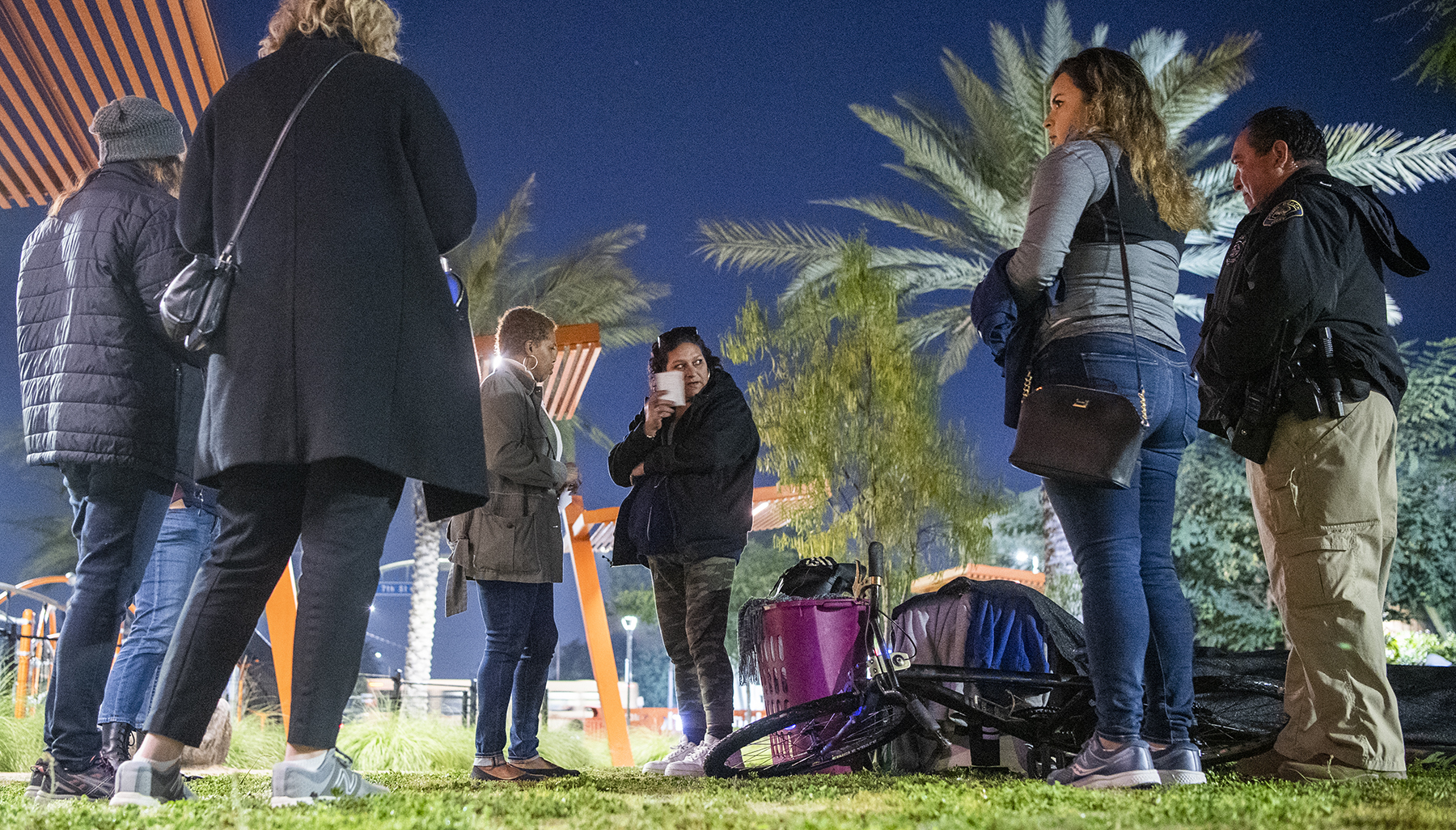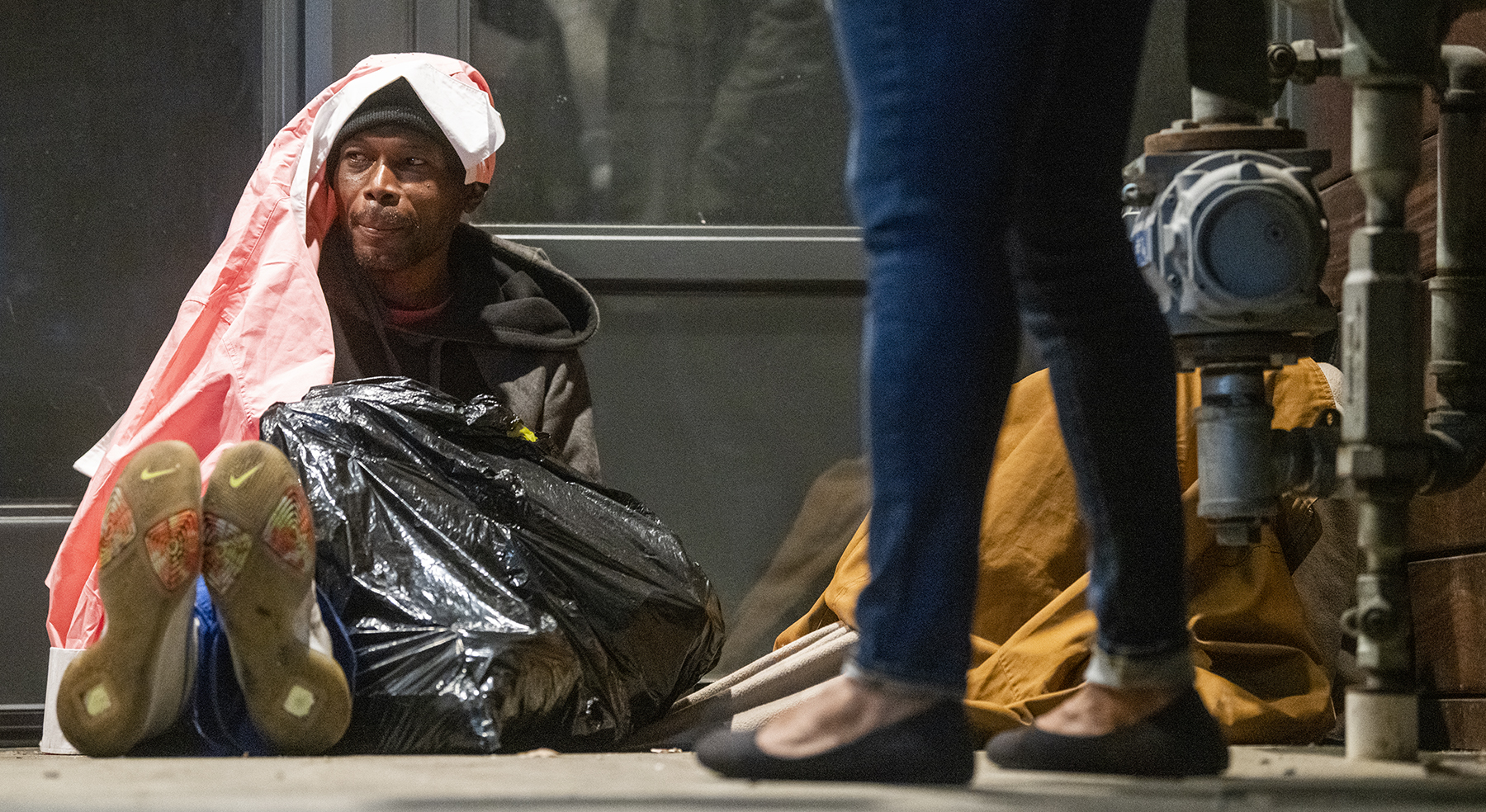Long Beach native Rachel Kallahan, 46, said she worked as a server at Roscoe’s House of Chicken and Waffles for more than a decade before she lost her job and home due to illness and mounting medical bills.
For the past two years, Kallahan’s been sleeping on the streets in Downtown Long Beach as she struggles with health issues including a hernia and tumors, she said. She said she’s wary of homeless shelters after a man tried to sexually assault her in one.
These nights, she sleeps in a sleeping bag in a well-lit area of Gumbiner Park off Alamitos Avenue.
“I feel much safer in the park, but I don’t want to be here,” she said. “I’m so tired of being out here.”
On Thursday, Kallahan was one of many people who were counted and answered survey questions for Long Beach’s annual point-in-time homeless count.

In the early morning hours, roughly 200 volunteers fanned out across the city to help gauge the homeless population and demographics. The count helps to determine how much county and state funding the city will receive to help with services.
Officials say the count is more important than ever as California grapples with a homeless crisis.
Homeless populations swelled last year across much of the region, but Long Beach saw only a slight increase compared to its previous count in 2017. The city last year counted 1,863 unsheltered people, for a 2% increase.
In comparison, Los Angeles County, which kicked off its three-day homeless count on Tuesday, showed an increase of 12% countywide last year.
Results for Long Beach’s 2020 count are expected to be released in the spring.
Last year, the city changed the count from every two years to annually and cut the number of volunteers from 500 to 250, which was a more manageable number, said Health and Humans Services Director Kelly Colopy.
Colopy said Long Beach, which is one of just a handful of cities with its own health department, was able to boost some of its services last year thanks to more federal funding from the Homeless Emergency Aid Program (HEAP). The city has also applied for additional state funding of about $7 million for homeless services.
Colopy said she’s hopeful the 2020 count will reflect the increased effort.
“What we want to see is that the numbers are going down,” she said.
While the city saw funding boosts for some services, other areas, like Section 8 housing, have struggled, said Alison King, deputy executive director for the Long Beach Housing Authority.
King said the federal Section 8 program, which provides rent payment vouchers for low-income families, has been hit hard by the state’s affordable housing crisis. The waiting lists have only grown as affordable housing becomes more scarce, she said.
“We don’t have any vouchers to give people right now,” she said. “I haven’t given any out since August.”

Just before dawn, King and small a group of volunteers walked a dense portion of Downtown near Seventh Street and Alamitos Avenue counting the homeless.
The group asked survey questions including age, gender, length of time experiencing homelessness and struggles with drugs or alcohol and mental illness. They offered cards with numbers for services as well as McDonald’s gift cards for those who participated in the survey.
“Can you tell me what caused you to lose your housing?” King asked one man who was sitting under a blanket on the sidewalk.
The man replied that he struggles with mental illness and was abused as child.
“Do you want help?” she asked.
King’s group counted about two dozen people in a roughly two-hour timespan. Most said they had been homeless for more than a year and struggled with mental health issues. Most said they had experienced domestic violence at one point in their lives.
While most said they wanted help, only a few expressed interest in going to the city’s winter shelter.

King said the numbers so far appear lower this year.
“It’s tough to tell because people spread out,” she said.
The city also counts people sleeping on the beach and in their cars, but volunteers do not count people sleeping in recreational vehicles since that can be considered a form of housing.
Moving along in a wheelchair and dragging a second wheelchair that held his belongings, Terry Smith said he can’t recall how long he’s been on the streets. He said he fell homeless after his physical disabilities prevented him from working.
Smith said he plans to call the number on a card from one of the volunteers.
“I can’t even count how many years it’s been,” he said. “I’d like to get help.”

